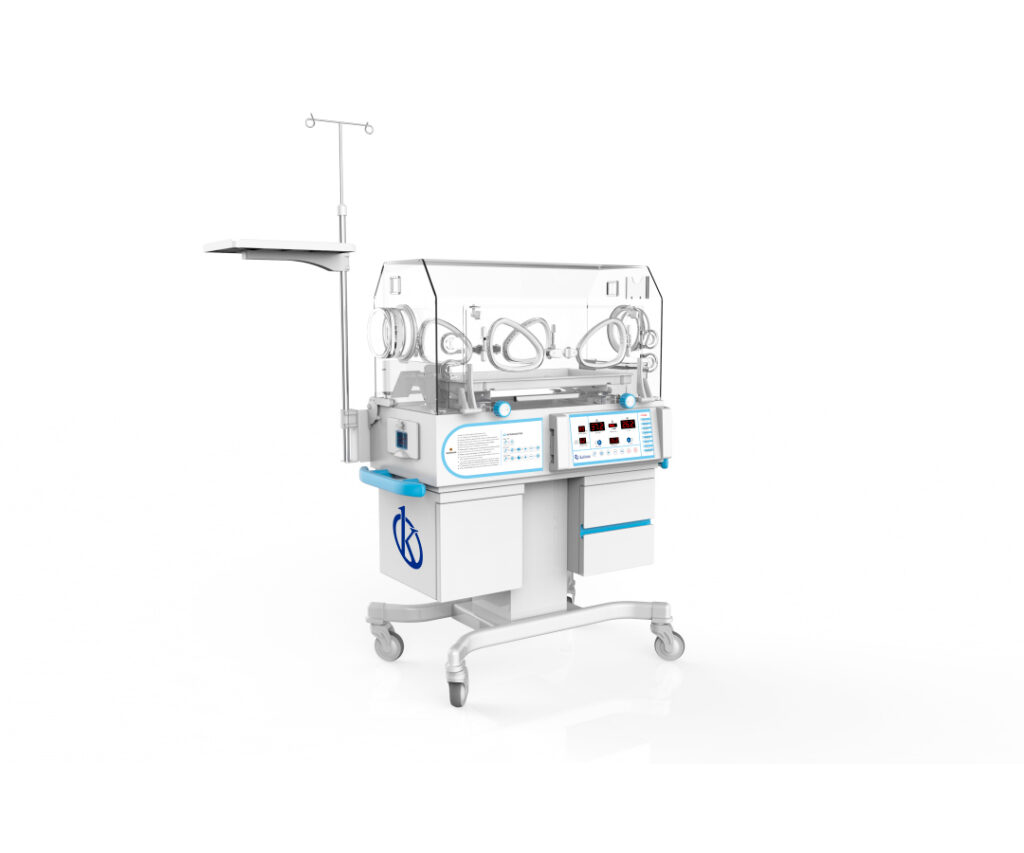The neonatal incubator is a closed medical equipment, which consists of a transparent cap that allows the patient to be isolated without losing eye contact with him, in order to provide an environment with pre-established temperature and conditions to favor the development of the newborn (premature , term or sick person). Ideally, core and body temperatures should be maintained with minimal variation.
Most incubators provide babies with heat through the flow of hot air, this heat is mainly transferred by convection. The heating and humidification systems are located under the incubator compartment. The air circulation is achieved thanks to a fan or a turbine that takes it from the outside and passes it through a heating element and a temperature measuring device, then passes over a water tank used to humidify the air (if it is required) before pushing it into the chamber where the patient is.
The incubators also have a heating element or heat unit that is activated by an electrical signal, which is proportional to the difference between the measured temperature and the reference value preset by the operator.
How do these equipments carry out temperature control?
The temperature control can be carried out in two modes:
Air temperature control mode:
The operator sets a control temperature value (reference) of the air inside the incubator. The heating system will work so that the interior temperature reaches the reference value. In general, the operator has the monitoring and display of the reference temperatures, inside the incubator and the patient (for which, a thermometer is used).
In the event that the incubator control system detects differences between the control temperature and the chamber air temperature and that these differences exceed the preset range (by the same operator), audible and visible alarms will be triggered; In some extreme cases, the heating system is disabled as a safety mechanism.
Temperature control mode of the patient’s skin or servo-controlled:
The operator sets a reference value of the desired temperature in the newborn; in this way the heating system will be in operation until the patient reaches the desired temperature programmed by the operator (equilibrium temperature). To achieve this, the incubator needs to continuously measure the actual temperature of the patient, which is achieved by placing a body temperature sensor.
How are incubators classified?
Incubators are classified into the following groups:
Stationary Incubators
In this group are the incubators that are located in the areas of emergency, intensive care, intermediate care and transitory care and possibly in areas assigned to physiological care.
Transfer Incubators
Transfer incubators, as the name implies, are equipment used to transport infants either within the medical unit or outside the medical unit. Said transport can be land or air.
These incubators must:
– Operate with alternating current, direct current and / or battery.
– Have the necessary requirements for the structure to be able to be transported in air and on land.
– Protection against vibrations and external noise.
– Have limited electromagnetic emissions so as not to interfere with air transportation.
Incubators / Radiant Heat Units
Some equipment combines the thermal capabilities of a neonatal incubator with the advantages of a radiant heat unit in terms of easy access to the patient. These types of units have temperature, oxygenation and humidity control of the air, as well as the temperature of the patient’s skin, both in neonatal incubator mode and in radiant heat unit mode. The conversion between the configurations is automatic, eliminating the need to transfer a patient between an incubator and a radiant heat unit.
In Kalstein we offer excellent neonatal incubators. That’s why we invite you to take a look at our equipment available HERE

